
OUR
RESEARCH
Learn about our ongoing, current, and past research projects.
Ongoing Research
Action for Cheetahs in Kenya conducts comprehensive, long‑term field research to understand and protect cheetah populations across Kenya.
Habitat monitoring & population surveys
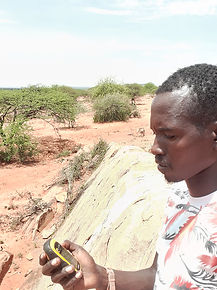
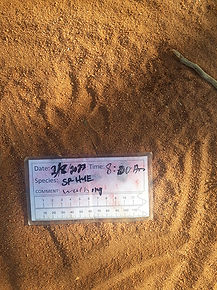
Field teams in Samburu carry out routine patrols and walking transects across varied land types. These efforts are crucial for identifying and mapping cheetah movement patterns, den sites, and areas of frequent sightings. By systematically recording signs such as tracks, scat, and direct observations, researchers can estimate cheetah presence and monitor population trends over time. Additionally, teams document the abundance of prey species and note any signs of competition or conflict with livestock. This information helps identify ecological pressures, such as habitat fragmentation or overgrazing, and guides the development of targeted conservation strategies to reduce human–wildlife conflict and support healthy ecosystems.
Until recently, our data collection process relied heavily on manual methods—recording observations on paper and later transferring them to Excel sheets. This included essential information such as animal sightings, tracks, activity, and scats, along with their GPS locations. In 2025, we began transitioning to a more efficient and integrated digital system. Over the past several months, we have been testing the EarthRanger mobile application for field data collection, and as of August 2025, we will fully discontinue paper-based methods.
This digital shift improves data accuracy, accessibility, and real-time reporting. However, it also increases our reliance on mobile data connectivity, making regular purchases of data bundles a new and necessary operational cost. In addition to EarthRanger, we are using tools like Looker for data visualization and analysis, and we plan to establish a centralized relational database to consolidate all collected data. This will further streamline access, strengthen data integrity, and support more advanced analytics across our conservation initiatives.
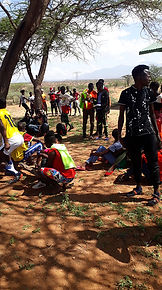.jpg)
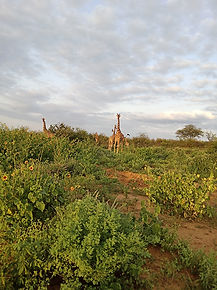
Non‑invasive genetic and diet analysis using scat dogs
A specially trained K9 team works alongside researchers to locate cheetah scat in the wild, relying on the dog’s acute sense of smell to detect even trace amounts of feces from elusive individuals. Once collected, the scat samples undergo genetic analysis to extract DNA, allowing scientists to identify individual cheetahs and trace family lineages. This information helps build a genetic map of cheetah populations, revealing how related individuals are distributed across the landscape. In addition, the analysis provides insights into habitat use and connectivity between populations, as well as dietary patterns, by identifying prey species consumed. Together, these findings contribute to a better understanding of cheetah ecology and support informed conservation strategies.
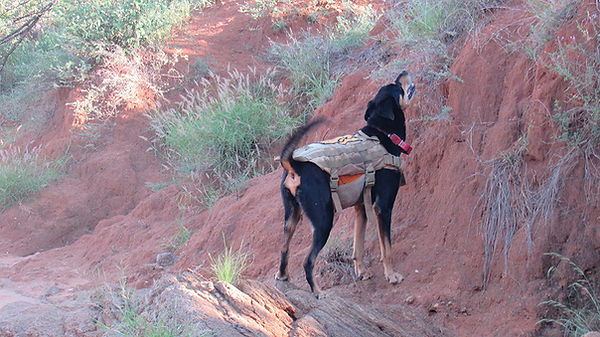
Human–wildlife conflict mitigation research
When reports of livestock predation are received, Action for Cheetahs in Kenya (ACK) responds by conducting thorough investigations to determine the predator responsible, ensuring accurate identification and response. Once the source of conflict is confirmed, ACK works closely with local communities to implement and test non-lethal, community-centered deterrents. These may include the use of flashing LED lights to deter nocturnal predators, the introduction of trained livestock guardian dogs to protect herds, and the reinforcement or redesign of bomas (livestock enclosures) to increase security. By monitoring these interventions over time, ACK evaluates their practicality and effectiveness in reducing human-wildlife conflict, ultimately aiming to promote coexistence between pastoralist communities and predators like cheetahs.
Over the past decade, four student-led projects have investigated underlying factors of human–carnivore conflict, including the effectiveness of deterrent light systems. In 2021–2022, a conflict mitigation toolkit was introduced and shared through seminars with rangers and field officers. Additionally, the Laikipia–Isiolo–Samburu (LIS) Working Group has focused on monitoring corridors and the impacts of linear development through camera trapping and collaborative data collection.

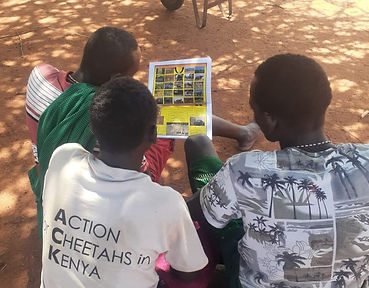

National
Cheetah
Survey
The National Cheetah Survey in Kenya, conducted between 2004 and 2007 by Action for Cheetahs in Kenya (ACK) in collaboration with the Kenya Wildlife Service and other partners, was the first comprehensive effort to map cheetah presence across the country. Using interview-based field surveys with local communities, rangers, and landowners, the study collected sightings and ecological data that helped identify key regions such as Masailand, Laikipia, Samburu, Isiolo, and Tsavo as critical cheetah habitats. While population trends remained uncertain, the survey suggested stability in cheetah distribution and social structure over several decades. The results informed Kenya’s national and regional conservation strategies and laid the groundwork for ongoing habitat modeling, corridor monitoring, and research. ACK continues to build on this work to guide long-term cheetah conservation across Kenya’s varied landscapes.
The Gr8 Cheetah Census is an upcoming nationwide initiative by ACK aimed at updating cheetah population data across the country. The project builds on ACK’s longstanding research efforts and follows their earlier national survey conducted from 2004 to 2007. The census is expected to incorporate methods such as camera trapping, community interviews, and non-invasive sampling to assess cheetah distribution, abundance, and habitat use throughout Kenya.
Past Research
Action for Cheetahs in Kenya (ACK) has been actively involved in addressing the impact of linear infrastructure—such as highways and railways—on cheetah habitats, particularly along the Mombasa–Nairobi corridor. This major transport route bisects the Tsavo ecosystem, disrupting wildlife movement and leading to increased mortality, including tragic incidents like the death of a pregnant cheetah and her unborn cubs near Machakos in 2013. In response, ACK has collaborated with partners on the development of a toolkit for sustainable infrastructure planning, which offers guidance on minimizing ecological damage during construction. ACK advocates for measures such as wildlife crossing signage, speed control in key areas, and the use of reflective collars for wildlife to reduce vehicle collisions. Beyond infrastructure mitigation, ACK conducts habitat and genetic studies, promotes coexistence with communities, and works to preserve critical corridors that support cheetah survival in Kenya.





